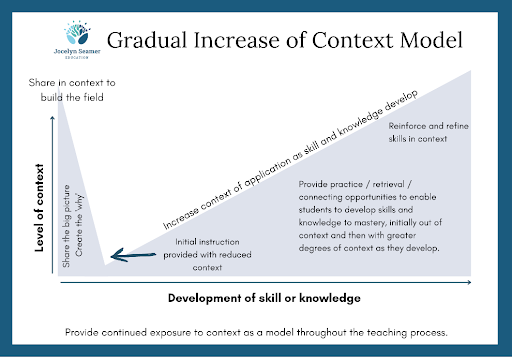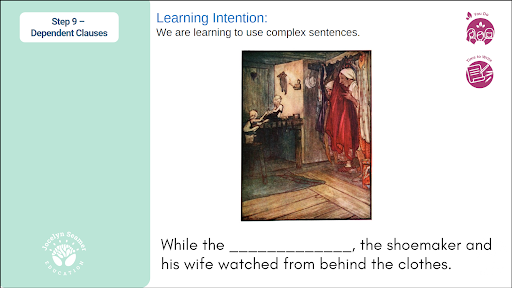Making Syntax Instruction Meaningful

One of the key elements of English teaching is syntax which refers to the arrangement of words and phrases in sentences. While it might feel like the concepts around syntax are confusing and never-ending, there are only a finite number of combinations for us to master. When it comes to instruction, we need to teach these concepts and combinations explicitly in teacher led lessons. However, this doesn’t end at the last slide of the PowerPoint presentation. Once we have introduced a concept and given students the opportunity to apply it in a decontextualised way, it is time to increase the complexity of tasks so that students learn to use more sophisticated language in a variety of situations.

What does this look like?
- Use syntax to both understand learning area content and express ideas in writing across the curriculum. Limiting the inclusion of syntax in the literacy block means that we are missing critical opportunities to put it to work. The point of language instruction is that it enables us to use the language in meaningful interactions, both orally and in writing. Providing many touch points for the application of syntax knowledge gives students a greater understanding of how our language works and how they can use it to their own benefit. For example, when reading a rich text in a science lesson, you may come across a complex sentence containing an embedded clause. If you have taught students about embedded clauses, you can point out that the embedded clause gives us more information about the subject of the sentence, helping them to better comprehend what they are reading.
- Choose texts for your English lessons that contain the syntax concept you want to teach. For example, if the content descriptors for your grade say that students need to know that complex sentences contain a dependent and independent clause, then choose text that contains great examples of complex sentences. This can then be the jumping off point for exploration of this concept (after you have done some stand alone, explicit work on it).

- Include examples of the concepts you are teaching in your own modelled writing and notice them in reading. It is not all about pre-planned explicit teaching. Taking the time to jump on the teachable moments in your day will help students see the relevance and value of syntax and help them better understand how they can use it to their best advantage. So if you are modelling writing (across the curriculum), throw in a dependent clause or coordinating conjunction. During the cause of reading with students (again, across the curriculum), notice when examples of syntax concepts appear. You don’t have to veer off for a 30-minute lesson at this point, simply bring them to your students’ attention and move on.
One of the challenges in this work is that we teachers have often made it all the way through school and university without an understanding of how our language works. Words like clause, phrase, complex sentence, subordinating, coordinating, embedded (and the list goes on) can really throw out and turn us off teaching syntax in a meaningful way. If that’s you, I am here to say that I’ve got your back! I provide lesson resources through the Resource Room membership, including text-based units that embed syntax, parts of speech, and many other concepts. I have explicit lessons for you to teach with while you build own knowledge so that you can help your student develop their skills without having to feel like an expert. All of this is linked to your grade, so you can be sure that you are teaching in a way that aligns with the curriculum and reporting at the end of each semester.

The Resource Room is now open. If you'd like to take advantage of a $2, 7 day trial and have a look around, click here.

 Jocelyn Seamer Education
Jocelyn Seamer Education
0 comments
Leave a comment